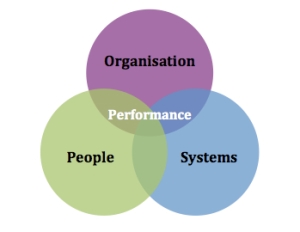A common (and often correct) criticism of the Human Resources (HR) function and HR initiatives is that they are not business minded. Other functions (such as Finance or Operations) criticise that HR gets in the way of running the business. While this is not always correct, HR needs to ensure that it presents these initiatives in a business manner with a view to how they will impact upon the ability of the organisation to achieve their strategic objectives.
There are opportunities for HR to improve organisational performance through focussing on systems and interventions that improve employee engagement. Research by Gallup has shown that, in world-class companies, the ratio of engaged employees to disengaged employees is 8:1. In average organisations, the ratio is only 1.5:1. The research also shows that engaged organizations have 2.6 times the earnings per share (EPS) growth rate compared to organizations with lower engagement in their same industry. (Note 1)
Similar research shows from Watson Wyatt determined that companies with the most effective employee communications programs had an average total shareholder return of 29.5 percent while those with least effective programs had a negative 15 percent return. (Note 2)
Engagement programmes are not an end in themselves. However, they are a starting point where HR can make a direct impact in the business. Talking in the language of the rest of the business will improve how HR is viewed and will lead to an increase in support for other HR intiatives.
Note 1: Employee Engagement: What is your engagement ratio? Gallup Consulting, 2008
Note 2: Watson Wyatt, Effective Communication: A Leading Indicator of Financial Performance – 2005/2006 Communication ROI Study



 Posted by The Dynamics of HR
Posted by The Dynamics of HR 


